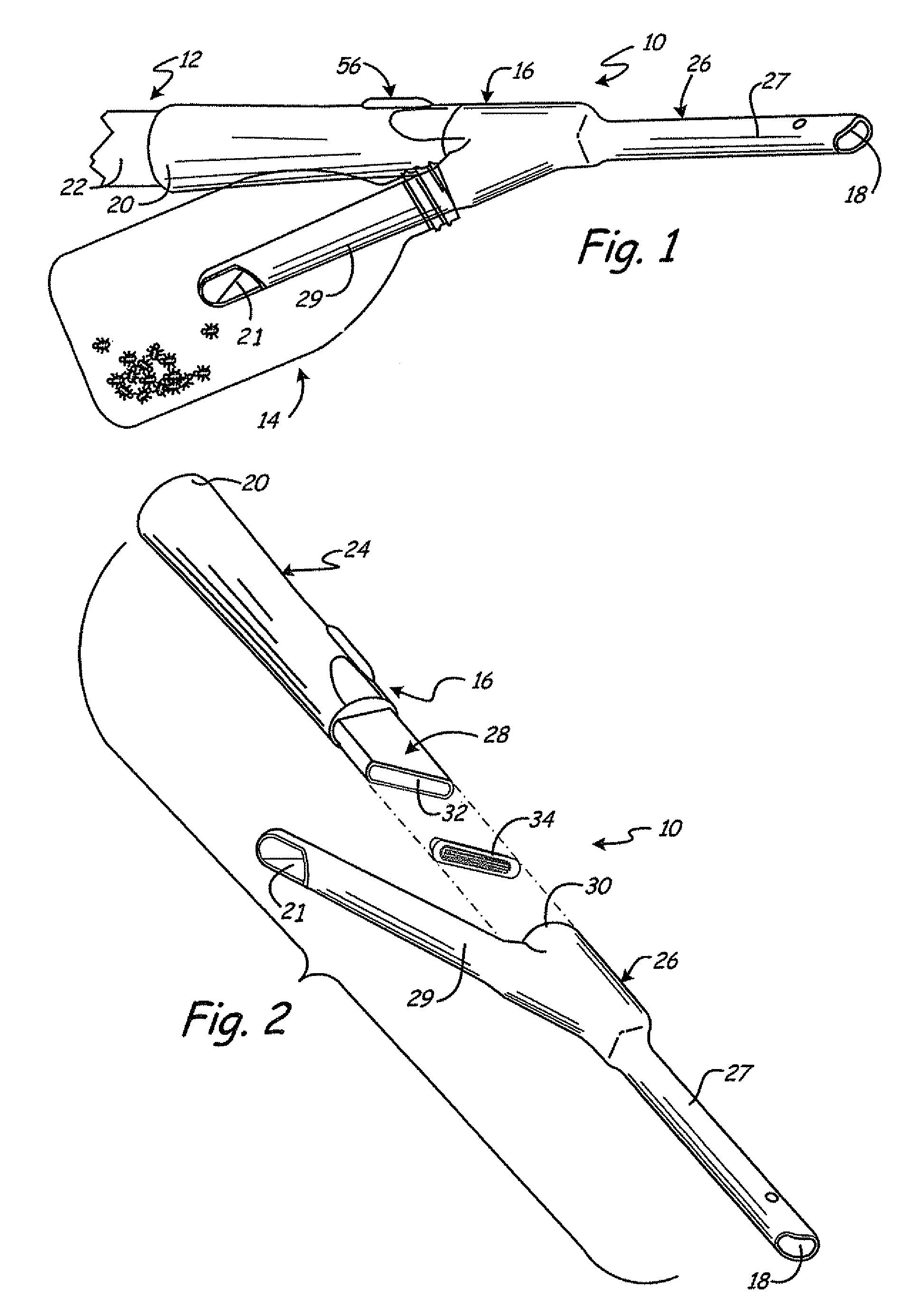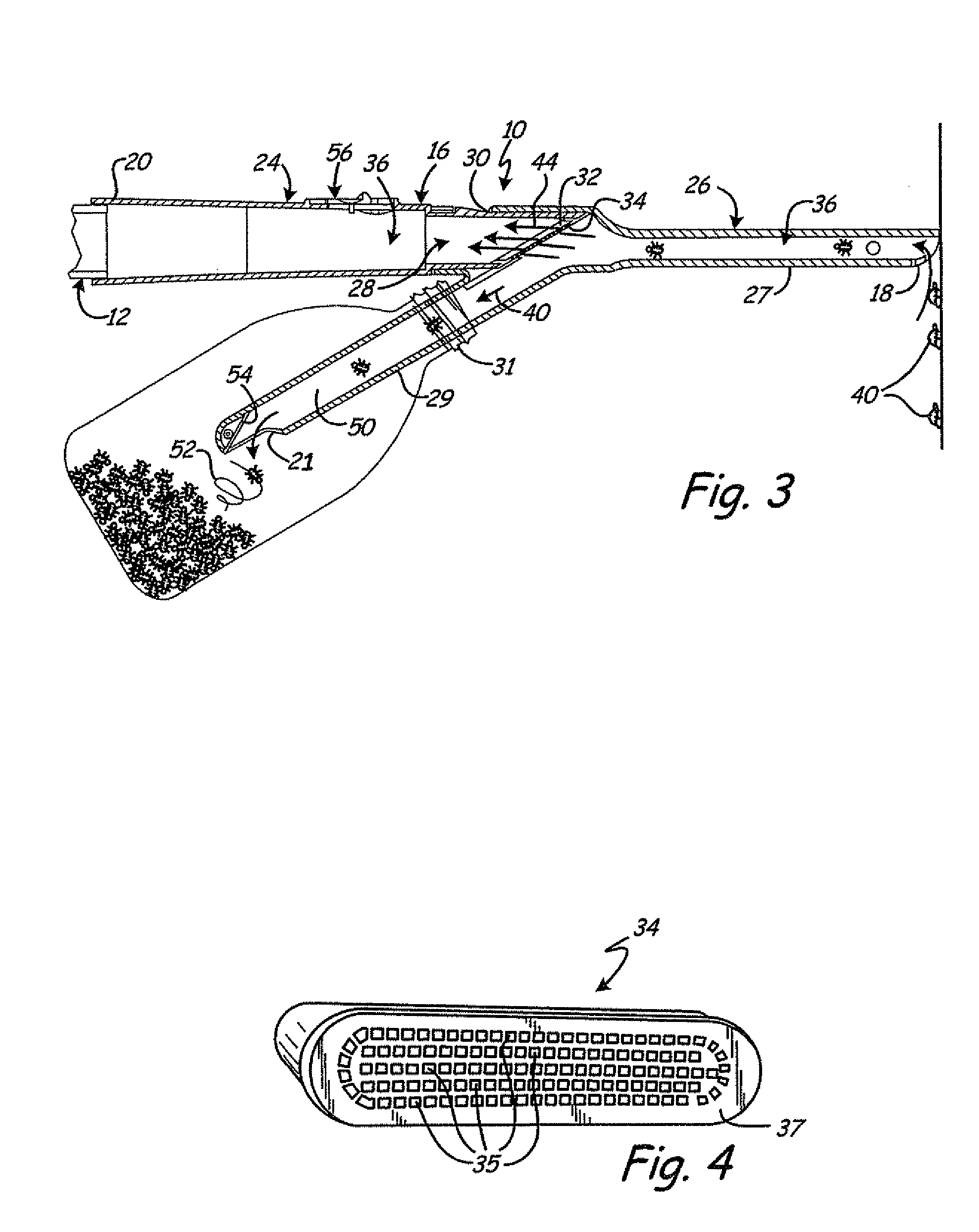Invertebrate capturing device
a technology for capturing devices and insects, applied in the field of insect capturing devices, can solve the problems of beetles that are extremely difficult to remove, beetles that are very annoying, and their reproduction remains unchecked
- Summary
- Abstract
- Description
- Claims
- Application Information
AI Technical Summary
Benefits of technology
Problems solved by technology
Method used
Image
Examples
Embodiment Construction
[0013]The device of the present invention is generally indicated at 10 in FIG. 1. The device 10 is for example preferably a separate and distinct device from that of a vacuum cleaner. The device 10 is connected to a conventional vacuum cleaner 20. A container 14 typically found in the home such as a plastic soda bottle is attached to the device for the capture and disposal of invertebrates. One advantage of the present invention is that it utilizes two components found in the typical home. This makes the present invention very economical to use.
[0014]By invertebrate is meant those arthropods that are commonly referred to as household pests and include such creatures as insects, arachnids, myriapods (centipedes and millipedes), and other invertebrate that may be found in or around a dwelling that are generally referred to, although incorrectly, as insects. The terms “invertebrate” and “insect” may be used in this application interchangeably and should be understood as having the same...
PUM
 Login to View More
Login to View More Abstract
Description
Claims
Application Information
 Login to View More
Login to View More - R&D
- Intellectual Property
- Life Sciences
- Materials
- Tech Scout
- Unparalleled Data Quality
- Higher Quality Content
- 60% Fewer Hallucinations
Browse by: Latest US Patents, China's latest patents, Technical Efficacy Thesaurus, Application Domain, Technology Topic, Popular Technical Reports.
© 2025 PatSnap. All rights reserved.Legal|Privacy policy|Modern Slavery Act Transparency Statement|Sitemap|About US| Contact US: help@patsnap.com



